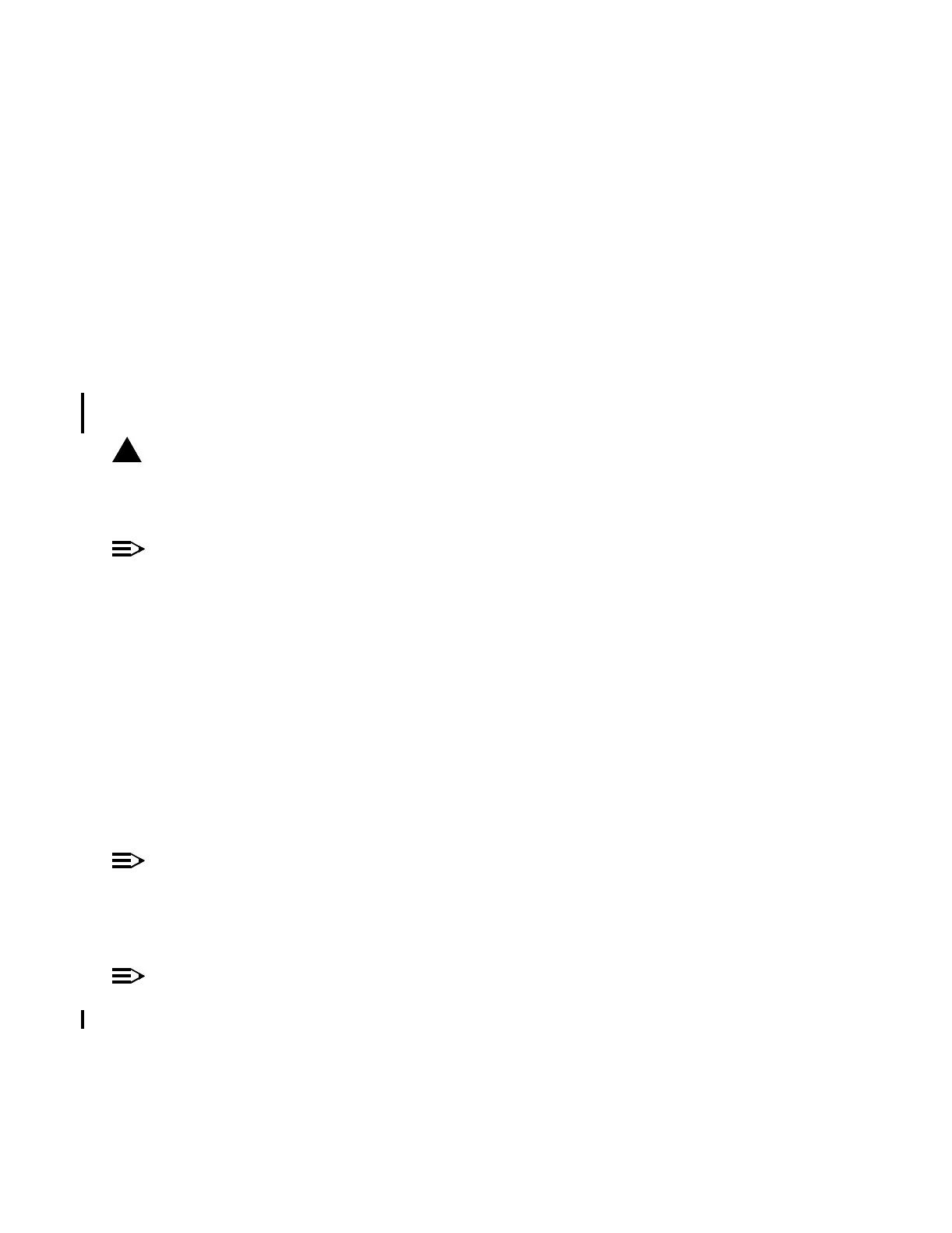DLP-536: Detailed Level Procedure 365-575-102
Page2of8 Issue8.0,July2002
1. Obtain the instructions (work order) that contain the cross-connect information.
Form 1 (at the end of this procedure) may be used to track the cross-connec-
tions.
2. If required, connect the craft interface terminal (CIT) to the local FT-2000 net-
work element and condition it.
Reference: DLP-501
3. At the CIT (local network element), select CONFIGURA-
TION-Retrieve-Crossconnection-All and execute to obtain a
Cross-Connection Map Report. Examples of a Cross-Connection Map Report
with a description of the output parameters are provided in Volume 1,
Section 11 of this manual.
!
CAUTION:
Incorrectly provisioned source node TID and/or destination node TID can result
in a service outage under certain multiple failure conditions.
NOTE:
To edit a cross-connection simply means to change the Source Node TID and/or
Destination Node TID associated with an existing cross-connection. This is
done by re-entering the same cross-connection right on top of the existing one
but with the new TID(s). The source node TID is the TID of the node where the
signal is added, whereas, the destination node TID is the TID of the node where
the signal is dropped. See Examples 1 and 2.
4. Compare the report with the instructions (work order). Are any cross-connec-
tions to be added, edited, and/or deleted at the local network element?
If YES, then continue with Step 5.
If NO, then continue with Step 14.
NOTE:
Assistance in selecting the appropriate parameters for the
CONFIGURATION-Delete-Crossconnection-STS3 (or STS1) command
is provided by the F1 help key function.
NOTE:
Descriptive information and examples on cross-connections are given in
Volume 1, Section 8, "Administration and Provisioning."
